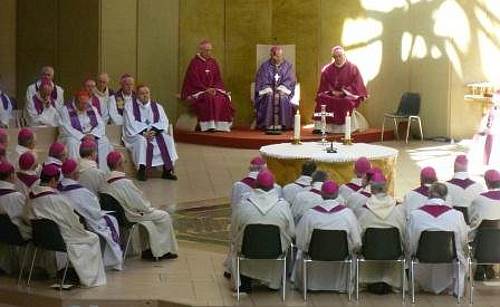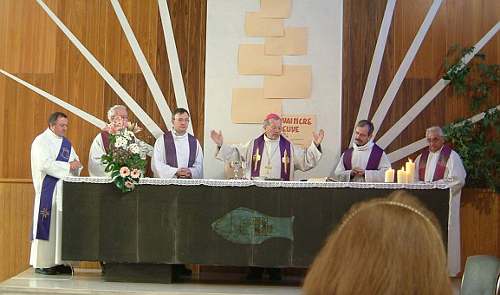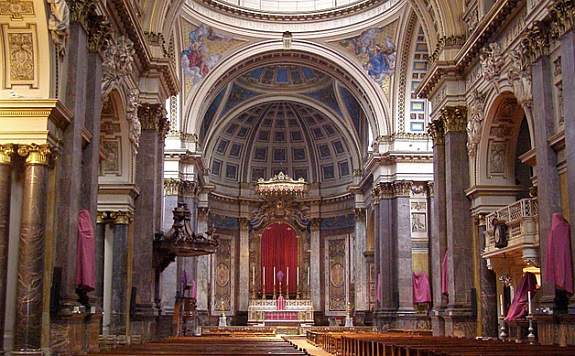
I midten av mai arrangerer organisasjonen ‘Ungdom og tradisjon‘ en svært interessant konferanse om den tradisjonelle messen. Fredag ettermiddag er det en «førkonferanse’ i FSSPs kirke i Roma, hele lørdagen er man på dominikanernes universitet Angelicum – og lytter til 8 svært interessante foredrag. Og søndag feires det en stor og flott tradisjonelle messe i selveste Peterskirken; på ‘alteret ved stolen’.
Hele programmet fins her (word-fil).
Her er lørdagens foredrag:
1 The Sacred Liturgy, Life of the Church. – His Eminence Antonio Cardinal Cañizares Llovera (Prefect of the Congregation for Divine Worship and the Discipline of the Sacraments)
2 Spirit of the Liturgy, Liturgy of the Spirit. – His Excellency Most Rev. Marc Aillet (Bishop of Bayonne, France)
3 The Ancient Liturgy of the Church: Ecumenical Bridge. – His Eminence Kurt Cardinal Koch (President of the Pontifical Council for the Promotion of Christian Unity)
4 The Minor Orders and holy service at the Altar. – His Excellency Most Rev. Athanasius Schneider (Auxiliary Bishop of Astana)
5 The Motu Proprio Summorum Pontificum, assessment and possibilities. – (Mons. Guido Pozzo, Secretary, Pontifical Commission “Ecclesia Dei”)
6 The Sacrament of Holy Order in the Roman Pontifical (editio typica of 1961-62). A theological liturgical reflection. –
(Father Nicola Bux, Teological Institute of Bari)
7 The apostolic-patristic origins of the “Tridentine Mass” – (Sr. M. Francesca of the Immaculate, F.I. of Città di Castello)
8 Latin, liturgical language of the Church and of Catholicity – (Prof. Roberto de Mattei, European University of Rome)
Her er musikken i søndagens messe:
The Gregorian Proper of Sunday III after Easter.
For the Ordinary, the Missa Papae Marcelli of Giovanni Pierluigi da Palestrina.
The Beginning: Giovanni Pierluigi da Palestrina, Terra tremuit
Main Procession: J.S. Bach, Preludio in Sol maggiore BWV 541
Offertory: Tomas Luis de Victoria, Ave Maria
J. S. Bach, Adagio in Do maggiore BWV 564
Communion: Giovanni Pierluigi da Palestrina, Sicut cervus
J. S. Bach, Liebster, Jesu, wir sind hier BWV 731
Domenico Bartolucci, O Sacrum Convivium
F. Mendelsohn-Bartholdy, Andante dalla Sonata n. 3
Domenico Bartolucci, Ave Verum
Finale: Domenico Bartolucci, Regina Caeli
Charles Gounod, Marcia Pontificia





